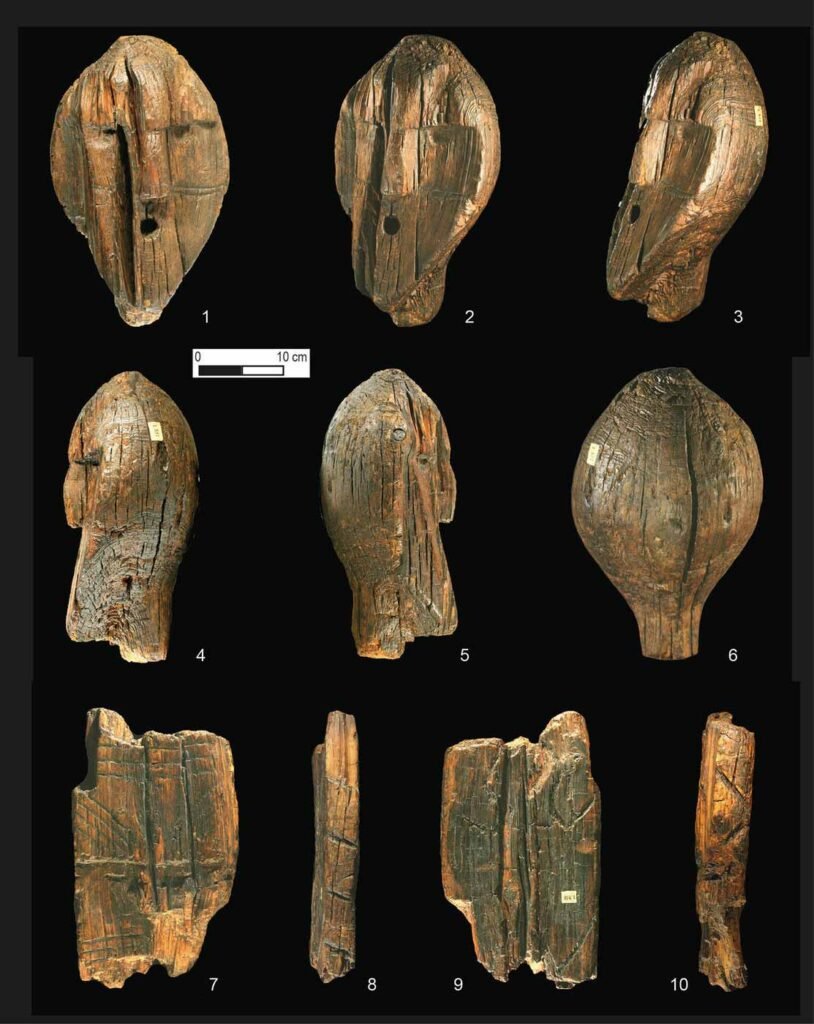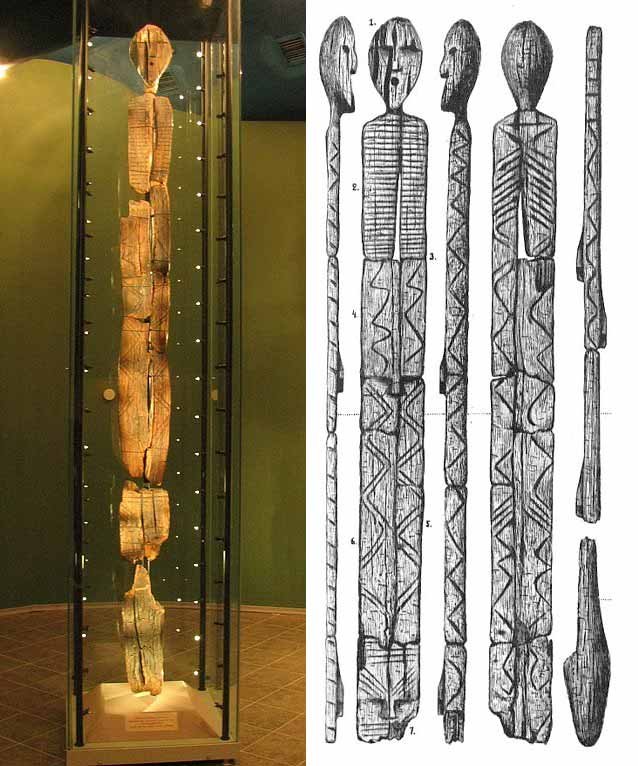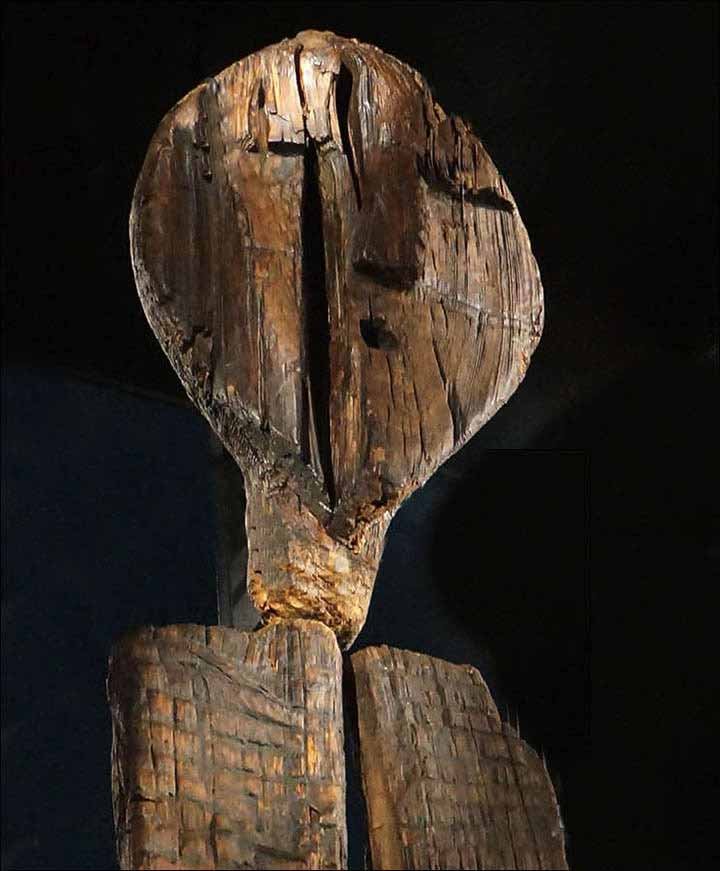A wooden statue discovered in Russia is older than it was assumed, making it twice as old as the Stonehenge and the pyramids, researchers claimed. The Shigir Idol was discovered in a peat bog in Russia by gold miners, its true age was believed to be around 11,600 years old, but new analysis has just added 900 more years to the artifact’s origin.

The Shigir Idol was first discovered by Russian gold prospectors, who stumbled upon the Idol in the Shigir peat bog 13 feet down and retrieved in 10 fragments, 62 miles north of Yekaterinburg. The Idol is estimated to stand over 17 feet tall after it was fully assembled. It has zigzag lines etched all over the body, and eight human-like faces carved at the top.
Radioactive carbon dating from the late 1990s placed the idol at 9,750 years old, but now the researchers have re-dated it, finding now that it is about 12,100-year-old. More than a century after the discovery of Shigir Idol, archaeologists continue to surprises about this astonishing Shigir Idol artifact. The recent research suggests that the sculpture is actually 900 years older than previously believed.

Based on the evidence, the team of researchers now estimated that the object was likely crafted about 12,500 years ago, at the end of the Last Ice Age.
The statue’s age was a matter of conjecture until 1997 when it was carbon dated by Russian scientists to about 9,500 years old. But in 2014, Dr. Terberger and a team of German and Russian team tested samples from the Shigir Idol’s core and the more advanced technology yielded an early origin, roughly 11,600 years ago, about a time when Eurasia was transitioning out of the last ice age.
For more than a century the idol had been considered a curiosity, and assumed to be at least a few thousand-year-old. A new study written by Dr. Terberger further skews our understanding of prehistory by pushing back the original date of the Shigir Idol by another 900 years, now placing it in the context of the early art in Eurasia.
“The idol was craved during an era of great climate change when early forests were spreading across a warmer late-glacial to postglacial Eurasia,” said Dr. Terberger.

He further said “The landscape changed, and the art, figurative designs and naturalistic animals painted in caves and carved in rock, did too perhaps as a way to help people come to grips with the challenging environments they encountered.”
The tree that provided the wood to crave the large statue was about 12,250 years old based on the 159 growth rings seen within the statue itself. The sculpture is thought to have been made from a larch tree by ancient artists who used a polished stone adze
The rings tell that the tree were growing very slowly, as the temperature were quite cold. Given the speed withwhich large logs rot and wrap, the researchers determined that the idol was made from a tree that had just been cut.
Researchers deducted from the dept h and widths of the markings that the cuts were made from at least three sharp chisels, two of which were probably polished stone adzes and the remaining might be the lower jaw of a beaver.
People who built the idol had some skills for shaping and craving wood, so far this is the only artifact that has been discovered so far, that doesn’t mean that we can’t find more artifacts like this.
“These things didn’t start with farmers, they began much earlier with hunter-gatherers. We have to accept that hunter-gatherers had complex rituals and were capable of very sophisticated expression of ideas and art, ” Dr. Terberger told the Guardian.
Mysterious markings on the Shigir Idol?
The Shigir Idol is now housed at Sverdlovsk Regional Museum, it is filled with cravings, some of which looks like some kind of code. It seems like people were passing some information with the help of this idol, as the artifact is covered in encryption information that looks like code.

The encryption code remains a mystery to the researchers, which leads researchers to believe that those who made the encryption code, the creators, lived in total harmony with the world, they had advanced intellectual development and a complicated spiritual world.
Svetlana Shevchenko, Chief keeper of the Idol at Yekaterinburg History Museum believe that “a straight line could denote land, or horizon,” it can be a boundary between earth and sky, water and sky, or it might be the borderline between different worlds.
‘A wavy line or zigzag symbolized water, snake, lizard, or determined a certain border. In addition, the zigzag signalled danger, like a pike. Cross, rhombus, square, circle depicted the fire or the sun, and so on.’
But it could mean anything, it could even have multiple meanings, it all depends on the creators who gave the idol seven faces, one of which is in 3D. Shevchenko argues that the idol tells the story of the ‘creation of the world’ as understood by Mesolithic man.










